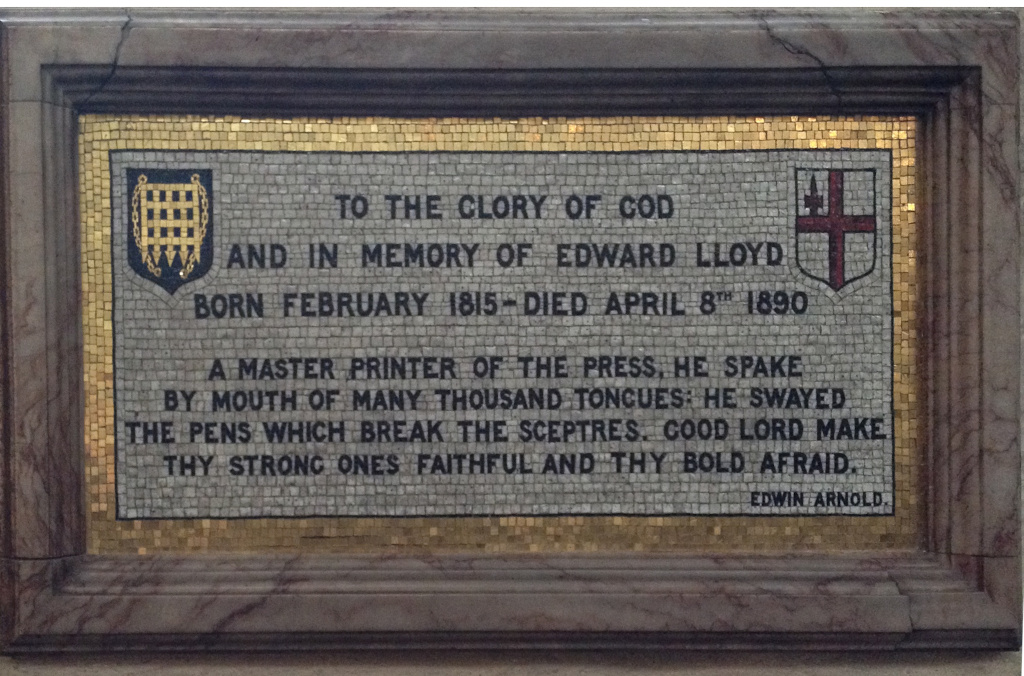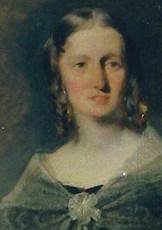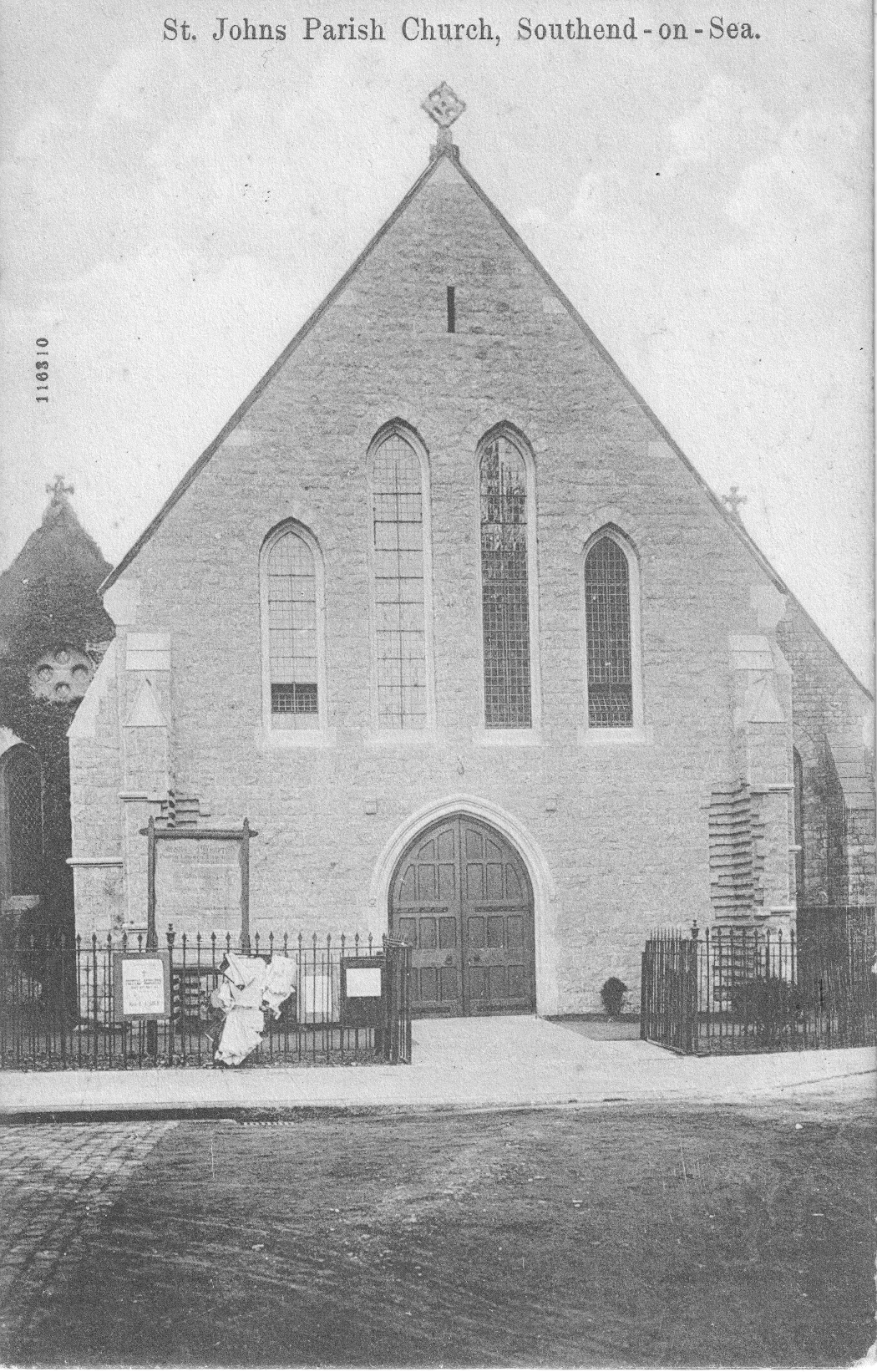Edward Lloyd 1815–1890
Edward Lloyd was born on 16 February 1815, the youngest of three sons. His father, Thomas Lloyd, was a Clothier, Dealer and Chapman and had many business ventures in the cloth trade, although suffered bankrupcy more than once.1 His eldest brother, Thomas, made a successful career in medicine although the middle son, William, died in poverty.
Edward Lloyd’s education to the age of 14 was fairly generous at a time when the poor received little or no schooling. He was intelligent, energetic and enterprising, and claimed to have started on his life’s career of publishing as soon as he left school.
The law may have been intended for him. However, while working in a solicitor’s office, he attended classes at the London Mechanics’ Institute. He won a silver pen as prize for best student of the year, and treasured it all his life.
For many years, he lived in rooms on the periphery of the City marrying Isabella McArthur in 1834. The and they had three sons, one of whom died in infancy.
From April 1844, although still married to Isabella, Lloyd had set up house with Mary Harvey in Forest Hill. She was the wife of Lloyd’s paper supplier William Mullet and the liaison led to Mullet suing Lloyd for “Criminal Conversation” in December 1844.2William Mullet had discovered the affair and his revelations to Isabella caused her to move out of Salisbury Square. Lloyd and Mary later had a child, Frederick, who was born in February 1845.
Lloyd had a second brush with bankruptcy in 1848, but managed to come to a voluntary agreement with his creditors.
Mary died of cholera in August 1849 and Frederick was brought up by his father.
At the 1851 census, Lloyd is shown as living with Maria Martins in Acton Vale. Their first child, Annie, was born in 1853.
In 1852, he appointed the respected author and playwright, Douglas Jerrold, to be the editor of Lloyd’s Weekly.In 1854, he published his last romance and, in 1856, he could afford to buy the 100-acre Winns estate in Walthamstow. The house was the fine Georgian mansion, now the William Morris Gallery, that is familiar to Londoners heading east on Forest Road.
Edward and Maria lived together as man and wife, had eleven children and were finally married at St John’s Church, Southend-on-Sea after the death of Lloyd’s first wife Isabella in 1867. They went on to have another four children.
Ever more prosperous, the family was moving from the bourgeoisie into a full-blown London society life—their daughter Emily was presented at court and the Lloyds moved to 17 Delahay Street, Westminster in 1885 in the parish of St Margaret’s Church. The whole family showed great dedication to church and parish. Two of the daughters, Annie and Clara, married curates at the church, R A Bullen and F E Coggin.
In 1889, Edward suffered what may have been a heart attack while working on a major reorganisation of Lloyd’s Weekly. Once over the worst, he continued to supervise operations and, after convalescing at his house in Caterham, he returned to London, went on working, wrote his will and the family trust deed, and created Edward Lloyd Ltd so that the business could be passed on to his children in an orderly way.
Edward Lloyd died on 8 April 1890. His funeral was held at St Margaret’s with the help of his two sons-in-law. The flowers and wreaths from family, friends and employees were so plentiful that a second hearse had to be used to take them to Highgate Cemetery. Maria died on 28 July 1893, aged 63.
St Margaret’s Church
This plaque commemorates Edward in St Margaret's Church, Westminster. The verse is by Sir Edwin Arnold, a popular poet and editor of the Daily Telegraph for 15 years. “The pens that break the sceptres” caught the fancy of Lord Tennyson. At the time, he was writing a verse for William Caxton who was buried at the church in 1492 and commemorated by the London printing trade in 1892.
 |
| The Commemorative plaque in St Margaret’s Church, Westminster |
Depicting “work”, the three larger window panels of Lloyd’s window showed Jesus in a carpenter’s workshop flanked by two angels and the three smaller ones, a sower sowing seed, Caxton at his presses and a reaper harvesting grain as reported in Pall Mall Gazette. 4
The memorial window to Edward was seriously damaged by a bomb blast in World War II, along with the adjacent window dedicated to Caxton. They were in the north wall, next to the window dedicated to Admiral Robert Blake (1598–1657).
Edward’s memory is also celebrated in Holy Trinity Church, Algiers, where he is remembered as “the first to show the value of alfa fibre [esparto] for the manufacture of paper”.
Footnotes
- 1 Lloyd, Nigel, Lloyd Family History
- 2 Globe, Monday 23 December 1844, p4.
- 3 Catling, Thomas, My Life’s Pilgrimage (London: John Murray, 1911), 192
- 4 Pall Mall Gazette, 13 June, 1891 p.2



